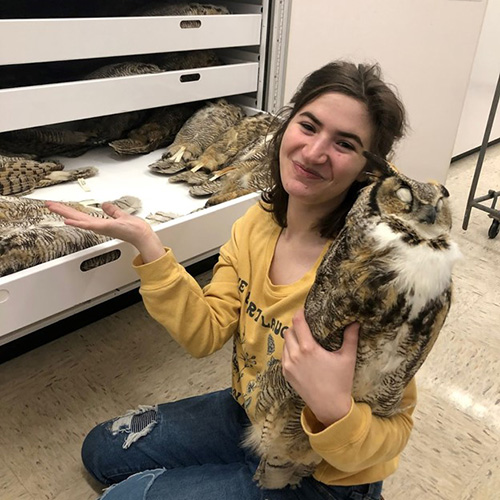
Curating curiosities
The Bell Museum’s vast collection of biological specimens
By Netanya Sadoff, BS ‘25 ESPM

The Bell Museum is well known for many things. At the Bell, you will find intricately detailed nature dioramas showcasing Minnesota's massive scope of biodiversity, a state-of-the-art planetarium with spellbinding showcases of the night sky and beyond, and of course, the true-to-scale wooly mammoth replica adopted as the unofficial mascot of the museum itself. What many people don’t know is that this fluffy pleistocene pal isn’t the only mammoth-sized part of the museum. Little known to the average visitor, the Bell is home to a truly mammoth-sized collection of biological specimens, locked not just away from the view of the public, but in a fully separate location found a half mile away from the museum proper. On the U of M’s Twin Cities campus in St. Paul, over 138,000 preserved animal specimens are stored securely and maintained with care.

Some may think it strange and unnecessary to spend resources on the maintenance and accumulation of what are essentially animal carcasses, but the diligent team of professors, researchers, and students who curate the collections are quick to demonstrate the true value found in the 150-year old assortment of dead animals: research.
Recently, I was a curatorial assistant for the Bell’s ornithology and mammalogy collections. In this role, I helped with the maintenance and preservation of specimens in the collection. For me, that mostly meant cleaning and boxing up bird skeletons and checking collection cabinets for harmful pests such as flesh-eating dermestid beetles. It wasn’t exactly glamorous, but it was a job that needed to be done! The Bell depends on its team of curatorial assistants to maintain and add to their “mammoth” collection of biological specimens. Researchers need a great diversity of specimens from across the world to have a large sample pool for their work.

My favorite specimen in the collection is the platypus skeleton displayed in a glass case! I love the “oddball” animal specimens in general, the echidnas, sloths, and other weirdos and misfits, but the platypus is my absolute favorite.
Want to learn more about the Bell’s specimen collections? Check out our “Campus Curiosities” video for a behind-the-scenes look at the Bell’s incredible ichthyology (fish) collection!





